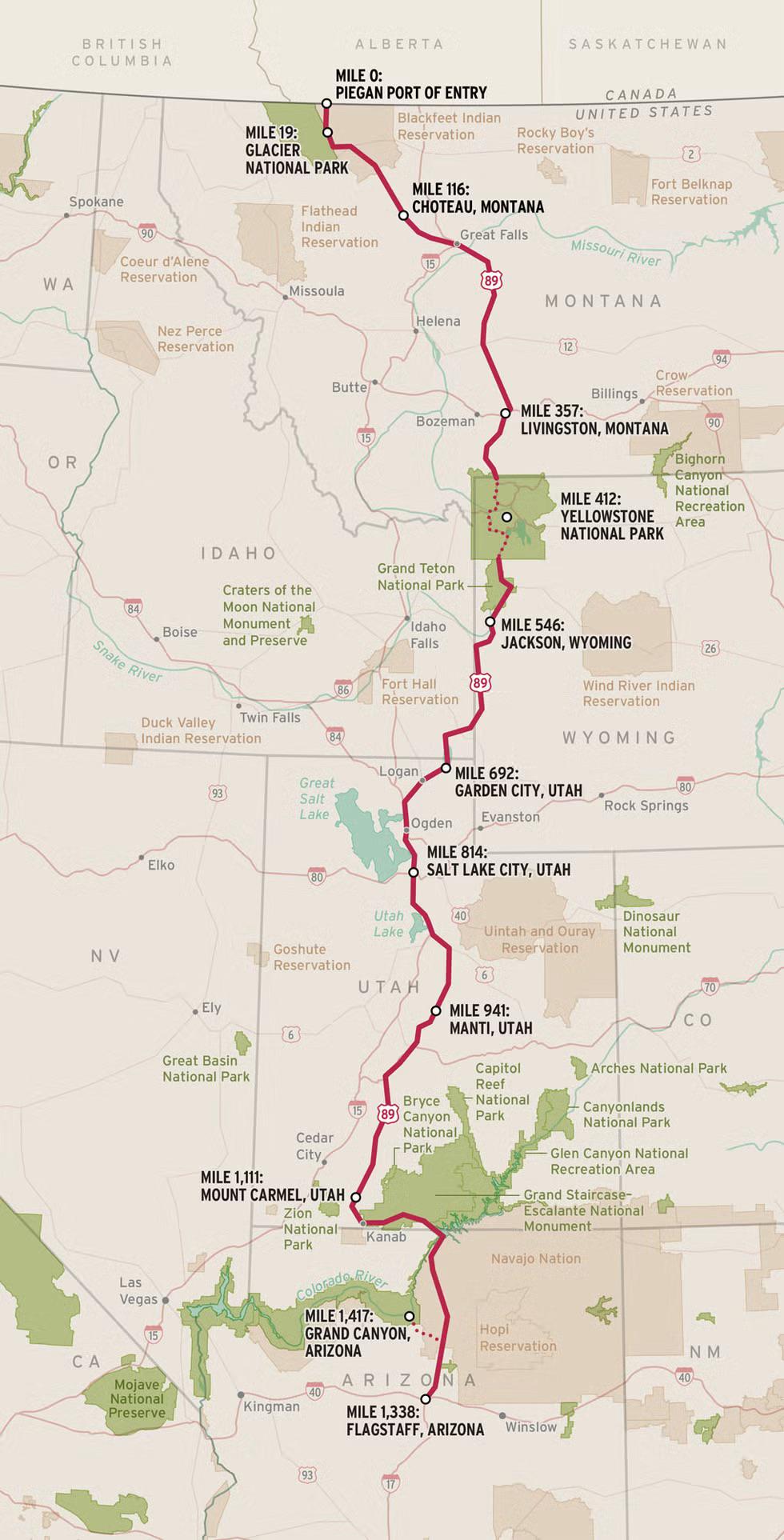US 89 National Park Highway Map


Marcus Rodriguez
Historical Geography Expert
Marcus Rodriguez specializes in historical cartography and geographic data analysis. With a background in both history and geography, he brings unique...
Geographic Analysis
What This Map Shows
The "US 89: Known as the National Park Highway" map provides a detailed visualization of one of America's most scenic routes, highlighting the highway's path through iconic national parks. Stretching from the Canadian border in Montana to the Mexican border in Arizona, US 89 serves as a vital artery for travelers seeking to explore the breathtaking landscapes of the American West. This route not only connects major parks but also showcases the diverse ecosystems and geological wonders found along its length.
Deep Dive into US 89 and Its National Parks
US 89 is often referred to as the National Park Highway due to its remarkable proximity to several of the United States' most treasured national parks. This highway weaves through regions of striking natural beauty, making it a focal point for both tourism and conservation efforts. Have you ever wondered how many national parks US 89 actually connects? The answer is impressive: it traverses or is in close proximity to Grand Teton, Yellowstone, Zion, Bryce Canyon, and the Grand Canyon, among others.
Each of these parks offers a unique glimpse into different ecological zones. For instance, Yellowstone National Park is famous for its geothermal features, such as Old Faithful and the Grand Prismatic Spring, which are a result of volcanic activity beneath the Earth's crust. In contrast, the arid landscapes of Zion National Park showcase stunning red rock formations and deep canyons carved by ancient rivers.
Interestingly, US 89 isn't just about the parks; it's also a reflection of the diverse cultures and histories of the regions it passes through. The highway runs through various Native American lands, where tribes have lived for thousands of years. This cultural richness adds another layer of significance to the route, making it not only a journey through nature but also through history.
In terms of geology, US 89 traverses several major mountain ranges, including the Rocky Mountains and the Colorado Plateau, which feature a variety of rock types and formations. These geological features have shaped the landscapes we see today and play a crucial role in the ecology of the regions. The highway's elevation changes dramatically, with certain areas reaching over 7,000 feet, creating unique microclimates that support diverse flora and fauna.
Regional Analysis
Breaking down the regions along US 89 reveals fascinating differences in ecology and landscape. Starting in Montana, the highway begins its journey at the northern terminus of Glacier National Park, known for its alpine scenery and vast glacial features. As you travel south into Wyoming, the landscape transforms into the rugged terrain of Yellowstone, where geothermal activity dominates.
Moving further south into Utah, the scenery shifts dramatically again as you enter Zion and Bryce Canyon. Zion is characterized by its impressive sandstone cliffs and slot canyons, while Bryce Canyon is renowned for its unique hoodoo rock formations. The contrast between these parks is stark, yet both are vital ecosystems that provide habitats for diverse wildlife.
As you approach Arizona, the landscape transitions into the iconic vistas of the Grand Canyon. Here, US 89 provides access to viewpoints that showcase the immense size and geological history of one of the Seven Natural Wonders of the World. Each region along US 89 offers its own distinct features, creating a tapestry of natural beauty that attracts millions of visitors each year.
Significance and Impact
The importance of US 89 goes beyond its role as a scenic highway; it is integral to conservation efforts and the economy of the surrounding areas. With tourism being a significant economic driver, many local communities depend on the influx of visitors drawn to the national parks. This connection has prompted initiatives aimed at preserving the natural landscapes and promoting sustainable tourism practices to ensure that these areas remain protected for future generations.
Moreover, the highway serves as a reminder of the need for conservation in the face of climate change. Many of the ecosystems along US 89 are vulnerable to the impacts of rising temperatures, altered precipitation patterns, and increased human activity. Protecting these national parks is crucial not only for biodiversity but also for maintaining the natural beauty that draws people to these areas.
As we look to the future, the continued popularity of US 89 as a travel route raises important questions about land management and environmental stewardship. How can we balance the needs of tourism with the imperative to safeguard these precious landscapes? The discussions surrounding these topics will be vital as we navigate the challenges ahead.
In conclusion, the US 89 National Park Highway is more than just a road; it is a vital link between some of the most beautiful and ecologically significant areas in the United States. Whether you're a seasoned traveler or planning your first adventure, this highway offers an unparalleled connection to nature, culture, and history.
Visualization Details
- Published
- August 8, 2025
- Views
- 106
Comments
Loading comments...